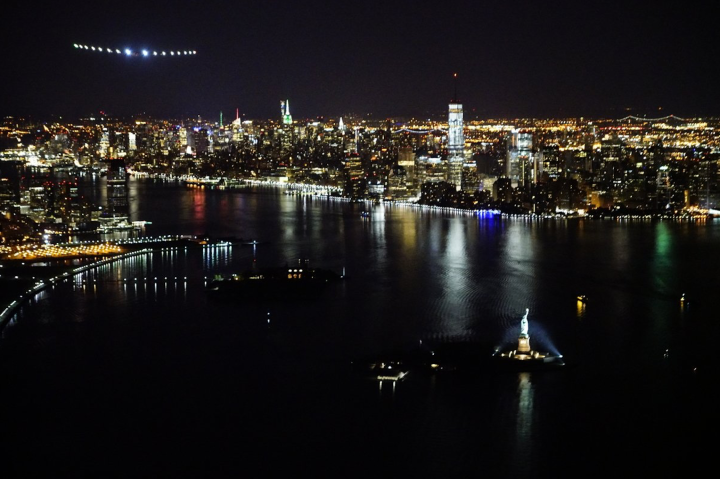
Done! #Si2 is safe in the JFK @NY_NJairports hangar in #NYC! Where will our journey take us next? #futureisclean pic.twitter.com/s51E6oxA4W
— SOLAR IMPULSE (@solarimpulse) June 11, 2016
For more than a year, this 100 percent solar-powered aircraft has been traversing the globe, and while it hasn’t been completely without its hiccups (there was a dead battery and the arrival of winter grounded the plane for nine months), the journey still represents a historic and impressive demonstration of what travel of the future might look like.
The trip to New York City from Allentown, Pennsylvania took around five hours, and before making his landing, pilot Andre Borschberg took a trip around the Statue of Liberty. Speaking with the BBC via satellite phone, the Swiss adventurer said, “The U.S. is a country where you meet a lot of entrepreneurs and pioneers, and so to end our American crossing at the Statue of Liberty — which represents for me the freedom of enterprise and the freedom to innovate that is the spirit you can find in this country — is so symbolic.”
Borschberg’s partner and co-pilot, Bertrand Piccard, will be taking on the next segment of the trip, which will send them back over the Atlantic. This journey will be yet another marathon, with flight director Raymond Clerc noting, “Patience will be the word. I expect the flight to take 3-4 days.”
And while all eyes are on Borschberg and Piccard as they make their way across the Earth, the adventurers stress that it’s not about them, but rather about the environment. “The most important thing isn’t to make world records,” Piccard said last year. “It’s to show what we can do with clean technologies.”
Editors' Recommendations
- U.S. airports safer after software upgrades aimed at preventing taxiway landings
- 5G apocalypse is here as major airlines suspend U.S. flights
- Jaybird’s new Vista 2 wireless earbuds are tough enough for the U.S. military
- Car2Go car-sharing service shutting down in the U.S. after reality check
- The U.S. Air Force’s secretive space plane ends record-breaking mission


